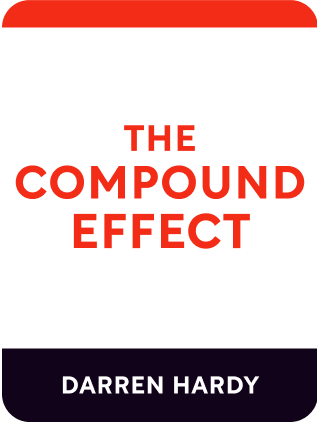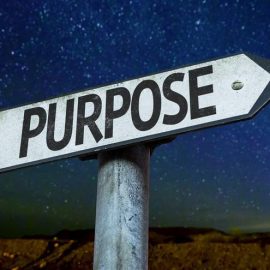

This article is an excerpt from the Shortform book guide to "The Compound Effect" by Darren Hardy. Shortform has the world's best summaries and analyses of books you should be reading.
Like this article? Sign up for a free trial here .
What is self-tracking? How can tracking your behavior help you get closer to your goals and improve the overall quality of your life?
Self-tracking is the practice of systematically recording information about your behavior and activities. The goal of self-tracking (also known as behavior tracking) is to bring awareness to your behavioral patterns and adjust them according to your goals.
Here is how self-tracking can help you make better choices and get your life back on track.
Self-Tracking Can Help You Make the Right Choices
When you track your behavior, you can take control of the choices you make throughout the day; your habits begin working for you and positive results fall into place.
Say you want to lose weight. First, get a good understanding of where you are now and picture where you want to be. Do you have a smaller waistline? Are you wearing a bathing suit? The next step is to become aware of the choices that are leading you away from this picture. Are you snacking late at night? Drinking soda? Awareness is important because it allows you to make smarter choices going forward.
Next, track your choices throughout the day, writing them down in a notebook you carry with you. Tracking behavior is the way to get a derailed life back on track. It brings complete awareness to the actions you are taking in an area of life you seek to improve. When you are aware of and responsible for your actions, you can make the most of yourself.
For the losing weight example, you’d write down everything that goes in your mouth throughout the day. No excuses. If your goal is to get out of debt, you’d write down every penny you spend. If your goal is to get fit, you’d track every exercise and workout.
Hardy attributes much of his success to self-tracking. Behavior tracking forced him to be very conscious of his choices. And when you’re making good choices repeatedly, the magic of the Compound Effect springs into action—reaping big rewards from small, seemingly inconsequential actions.
When you think of a success story, know that behavior tracking is involved. Think about the casinos in Las Vegas; they track hourly every gaming table and winner. Professional athletic trainers track their athletes’ every workout and nutrient. Baseball pitchers know every statistic involved with their game. Golfers collect diverse metrics on their swings. Professional athletes keep meticulous stats—they know that when their stats improve, they win more and earn more.
Self-Tracking in Real Life
Self-tracking brings awareness to your actions, and you’ll view life very differently when you’re consciously making better choices.
Hardy urges readers to try out tracking for one week, focusing on the area you most want to change. If you’re trying to lose weight, as mentioned above, you’d track everything you eat and drink for one week. If you are trying to get out of debt, you’d track every penny you spend. Write everything down in an organized way, with a new page each day on which you write the date. After one week, you’ll likely be astonished at all the calories or money that you previously had no awareness of.
Next, continue tracking for three weeks. The three-week timetable is a good measure, because 21 days is a good amount of time for a new habit to develop. Carry around a notebook and write down everything in the category you’re focusing on. During this 21-day tracking period you’ll find yourself going from being conscious of your actions to actually shaping your actions. You’ll ask yourself, “Do I really want that donut?” or “Do I really need to buy a $5 coffee at Starbucks?” After two weeks of saying no to that 200-calorie donut, you’ll have lost a pound. Two weeks of saying no to coffee will save you $70. When the Compound Effect goes into action over long periods of time, you’ll have lost significant weight and saved thousands!
Tracking Small Changes Results in Huge Payoffs
When you start self-tracking, you become aware of the tiny things you’re doing that don’t serve you well. This awareness lets you make small course corrections that, over time, will yield incredible results. There won’t be immediate applause or trophies, but eventually, your course corrections work and the Compound Effect will reward you with huge payoffs.
Think about a horse race. A horse can win by a fraction of an inch, but the prize money won is 10 times more than what the runner up wins. The horse isn’t 10 times faster, but many small actions—more training, better nutrition—made it just a little better—better enough to win.
Example 1: The CEO Turnaround
Hardy once mentored a CEO of a large organization that was doing well, but suffered from a lack of employee enthusiasm and engagement. Hardy had the CEO track one simple change: three times a week he was to go out into the company and talk to an employee who was doing something right or who he’d heard good things about. He was to share his appreciation and have a conversation with these employees.
This change in the CEO’s behavior took only minutes a week, but over time it had an extraordinary effect on the employees’ attitudes and work ethic. Feeling appreciated, they worked even harder; results trickled down to customer interactions and engagement, which resulted in increased referrals and business. After 18 months, the company’s profits grew by 30%—all because the CEO committed to a small action he performed consistently over time.
Example 2: Creating Wealth With the Compound Effect
Hardy once had an assistant, Kathleen, who earned $40,000 a year and wanted a raise because she had too many expenses and couldn’t save the 10% of her income that Hardy recommended. He didn’t give her a raise, but rather showed her how to become wealthy.
First, he had her track every penny she spent. He told her to open a savings account with $33, which was 1 percent of her monthly income. The next step was to live on $33 less the next month, which she was able to do by bringing a lunch from home one day a week. The next month she was to save 2 percent ($67), saving another $33 by cancelling her cable subscription. The following month she saved 3% by cutting a magazine subscription and making coffee in the office instead of going to Starbucks. By the end of the year she was able to save 10 percent of her earnings without a huge impact on her life.
This behavior trickled down into other areas of her life. Instead of spending money on mindless entertainment, she invested in personal growth material. Her creativity soared, and she came to Hardy with a plan: she’d implement new revenue and money-saving strategies for the organization and receive a percentage of the profits and cost-savings. By the end of the year she was earning more than $100,00 a year.
Now Is the Time to Make the Right Choices
When it comes to the Compound Effect, the sooner you make small, positive changes, the better. For example, if you started putting $250 a month into an IRA at the age of 23, you wouldn’t have to invest anything more by age 40—you’d have more than $1 million by age 67. But if you didn’t start until the age of 40, you’d have to continue investing until the age of 67, when you’d end up with less than $300,000.
But don’t use the excuse that it’s too late to start; it’s never too late to use the power of the Compound Effect. Starting now is the key, no matter how old you are. If you’ve always wanted to play the piano but think it’s too late because you’re 40, understand that if you start now, by the time you retire you’ll have been playing the piano for 25 years!
Example: Choosing to Succeed
Hardy met a woman named Beverly who was overweight and convinced she could never do anything like run a half-marathon. Hardy assured her she could and found her motivation: an upcoming high school reunion where she longed to look fabulous.
This motivating goal led her to follow a simple plan. First Hardy had her map out a mile loop near her home and told her to walk that loop three times a week for two weeks. Next, he had her slowly jog, but switch to walking if she felt winded. Seven weeks from starting the process, she could jog the full mile.
Beverly’s choice to get fit for her reunion fueled her new healthy habits, and the Compound Effect was set in motion. She upped her exercise slowly, and within 9 months she could run 13.5 miles and had lost weight, but the ripple effect was even greater. Feeling more energy and self-esteem, her interaction with her husband and children improved and became more loving, and her career benefitted from her newfound energy.

———End of Preview———
Like what you just read? Read the rest of the world's best book summary and analysis of Darren Hardy's "The Compound Effect" at Shortform .
Here's what you'll find in our full The Compound Effect summary :
- How small, daily actions can add up to big successes (or failures)
- Why it's easier to rely on the compound effect over time instead of taking big action all at once
- How it's possible to be better off starting with a penny than $3 million






